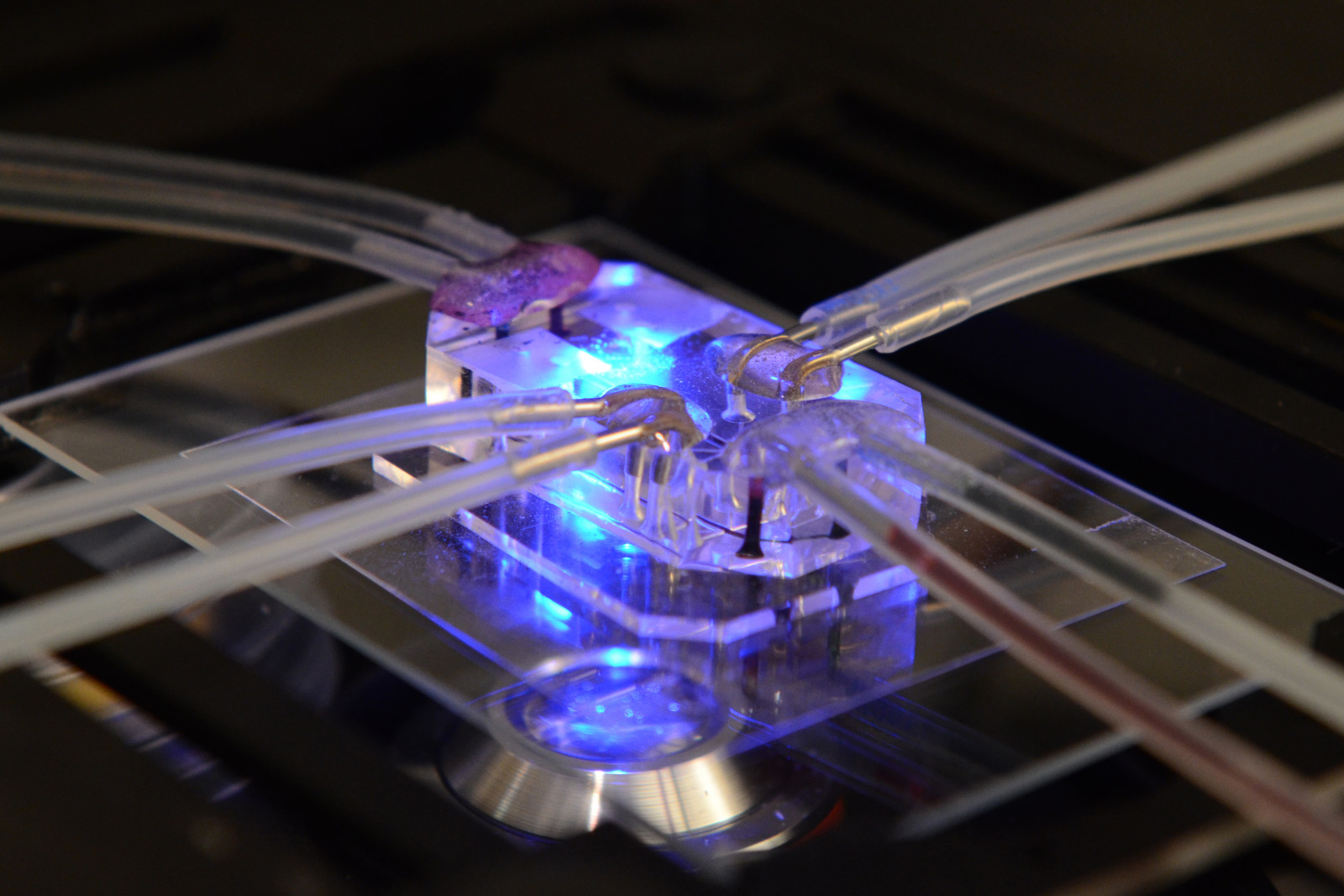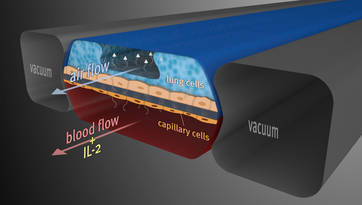Mimicking human organs and diseases in the lab could help to investigate diseases and rapidly screen compounds to find new drugs, and now, researchers at the Wyss Institute for Biologically Inspired Engineering at Harvard University have made a lung-on-a-chip capable of modelling a human condition called pulmonary oedema.
 The lung-on-a-chip device itself was first demonstrated two years ago by the same team, led by Donald Ingber, founding director of the Wyss Institute. It consists of a polymer structure about the size of a USB memory stick, containing a number of hollow channels. Two of these channels are separated by a porous membrane, which is coated on one side with human lung cells, and the other with cells from very small blood vessels known as capillaries. By passing air over the upper surface and blood-like medium over the underside, this chip can model interactions that occur at the surface of the lung. Two other channels on the sides of the chip can expand and contract to deform the interface to mimic human breathing.
The lung-on-a-chip device itself was first demonstrated two years ago by the same team, led by Donald Ingber, founding director of the Wyss Institute. It consists of a polymer structure about the size of a USB memory stick, containing a number of hollow channels. Two of these channels are separated by a porous membrane, which is coated on one side with human lung cells, and the other with cells from very small blood vessels known as capillaries. By passing air over the upper surface and blood-like medium over the underside, this chip can model interactions that occur at the surface of the lung. Two other channels on the sides of the chip can expand and contract to deform the interface to mimic human breathing.
This new research, published in Science Translational Medicine, demonstrates abnormal function of a human lung. A drug used in cancer chemotherapy, interleukin-2 (IL-2) is known to have a serious side effect of causing pulmonary oedema, where fluid can leak into the air spaces in the lungs. If the lung-on-a-chip is truly modelling a human lung, we should see leakiness across the lung tissue as a result of administering IL-2.
This was exactly what they saw. At similar doses and over similar time frames, the lung-on-a-chip experienced the leakiness, reduction in oxygen transport and clotting of an oedema patient. The experiment went one step further and identified something completely novel about oedema - the very act of breathing increases fluid leakage over three-fold.
 Organs-on-a-chip can be used for very high-throughput, replicable and controllable drug screening - potentially doing away with the need for some animal studies and increasing the rate at which we can identify new drugs. To find out is their model could work in this way, the team then tested potential therapeutic agents, including a new class of drug called a Transient Receptor Potential Vanilloid 4 (TRPV4) channel blocker being developed by GlaxoSmithKline. The team found that the symptoms in the lung-on-a-chip were prevented by this drug, a result that fits well with GSK results from mouse models.
Organs-on-a-chip can be used for very high-throughput, replicable and controllable drug screening - potentially doing away with the need for some animal studies and increasing the rate at which we can identify new drugs. To find out is their model could work in this way, the team then tested potential therapeutic agents, including a new class of drug called a Transient Receptor Potential Vanilloid 4 (TRPV4) channel blocker being developed by GlaxoSmithKline. The team found that the symptoms in the lung-on-a-chip were prevented by this drug, a result that fits well with GSK results from mouse models.
This gives us confidence in the lung-on-a-chip, suggesting it really is acting as a genuine organ might, at least when it comes to pulmonary oedema. Other organs, organ systems and other conditions, should follow and will likely change the future of drug discovery and testing.










Comments
Add a comment